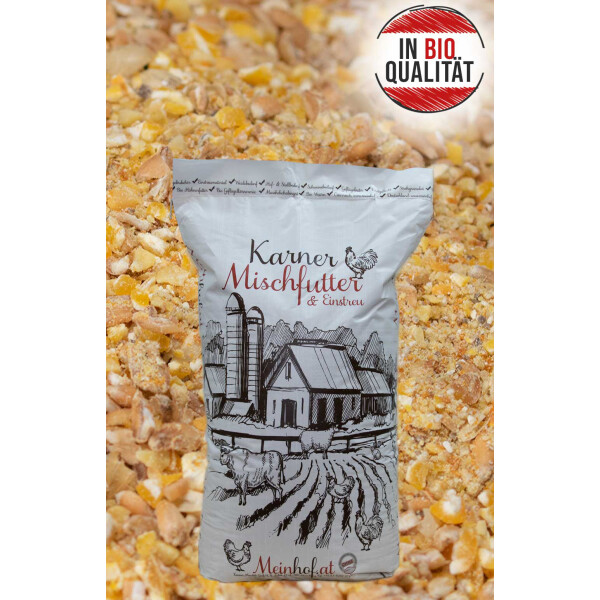Raising free-range chickens offers a rewarding experience, promising birds that enjoy a more natural lifestyle, foraging for bugs and greens. However, a common misconception is that these birds can fully "live off the land," eliminating the need for carefully managed feed. The truth is, even on the most abundant pasture, a complete and balanced commercial feed remains the cornerstone of their health and productivity. Foraging provides valuable enrichment and supplemental nutrition, but it is inconsistent and rarely meets all their dietary requirements. Implementing strategic feeding practices ensures your free-range flock receives the essential nutrients they need to thrive, not just survive, while making the most of their outdoor lifestyle.
Laying the Foundation with a High-Quality Starter Feed
The nutritional journey of a free-range chicken begins just like any other—in the brooder. For the first few weeks of life, chicks should be fed a high-protein starter crumble, typically containing 18-20% protein, formulated specifically for their rapid growth and development. During this stage, they have no access to range, and their entire nutritional world is contained within that feed trough. It is critical to avoid the temptation to offer treats or scraps, as these can dilute the intake of essential nutrients found in the starter Geflügelfutter .A strong start, supported by a complete diet, builds a robust skeletal structure and a healthy immune system, preparing them for the more varied diet they will encounter once they are allowed to range.

The Strategic Transition to a Complete Layer Diet
Once pullets approach laying age, typically around 16-18 weeks, they should be transitioned to a layer-specific feed. This feed is carefully balanced with 16-18% protein and a boosted calcium level, around 3.5-4.5%, which is non-negotiable for forming strong eggshells. This is a critical practice for free-range layers. While they will consume insects and greens that provide extra protein and some nutrients, the calcium they get from foraging is negligible. Relying solely on foraging would force their bodies to leach calcium from their own bones to produce eggshells, leading to weakened skeletons and a high risk of mobility issues and broken bones. The complete layer feed acts as a nutritional safety net, ensuring consistent egg production and long-term skeletal health.
Mastering the Timing of Supplemental Feeding
One of the most effective strategies for free-range flocks is to manage when you provide their primary commercial feed. A best practice is to keep the birds in their coop until mid-morning, with their layer feed available. This accomplishes several goals. First, it encourages them to eat their complete, balanced ration while they are hungriest, ensuring they ingest the essential vitamins, minerals, and amino acids before they head out. Second, it encourages them to lay their eggs in the nesting boxes rather than in hidden and hard-to-find spots around the property. Once released, they can forage to their heart's content, but their core nutritional needs have already been met.
Providing Essential Grit and Calcium Supplements
Even with a high-quality layer feed, free-range chickens require constant access to two key supplements: grit and oyster shell. Grit, which is small, insoluble stones, acts as "teeth" in the bird's gizzard, grinding down whole grains and fibrous plant matter from foraging. Without it, they cannot properly digest the varied foods they find in the yard. Oyster shell should be offered in a separate container, freely available. This allows high-producing hens to self-regulate their calcium intake. If a hen feels she needs more calcium for shell formation, she will consume the oyster shell on top of her layer feed. This simple practice is a powerful preventative measure against thin-shelled or misshapen eggs.

Mitigating the Risks of the Great Outdoors
The free-range lifestyle, while beneficial, comes with inherent risks that can be mitigated through smart feeding. Parasites, both internal and external, are a constant challenge. A well-nourished bird with a strong immune system is far better equipped to handle a parasitic load than a malnourished one. Furthermore, the varied diet from foraging can sometimes lead to selective eating, where birds pick out their favorite bits from the feed, unbalancing their nutrition. Using a crumble form of layer feed can help prevent this, as it is harder for them to sort through than pellets. Always ensure their feed is stored in airtight, pest-proof containers to avoid contamination from rodents or moisture, which can introduce toxins and disease.
Adapting Feed for Seasonal Changes and Reduced Forage
A flexible approach is key to year-round success. During the lush spring and summer months, forage is abundant, and your birds may naturally consume slightly less commercial feed. However, in the winter, when the ground is frozen or snow-covered and insects are absent, their entire diet will come from you. During this time, you may notice a significant increase in feed consumption, which is perfectly normal. Some flock owners also find it beneficial to offer a small afternoon "scratch" snack to encourage the birds to return to the coop as dusk falls. Remember, the goal is not to replace foraging but to supplement it intelligently, creating a symbiotic relationship between the feed you provide and the environment they enjoy.




Comments